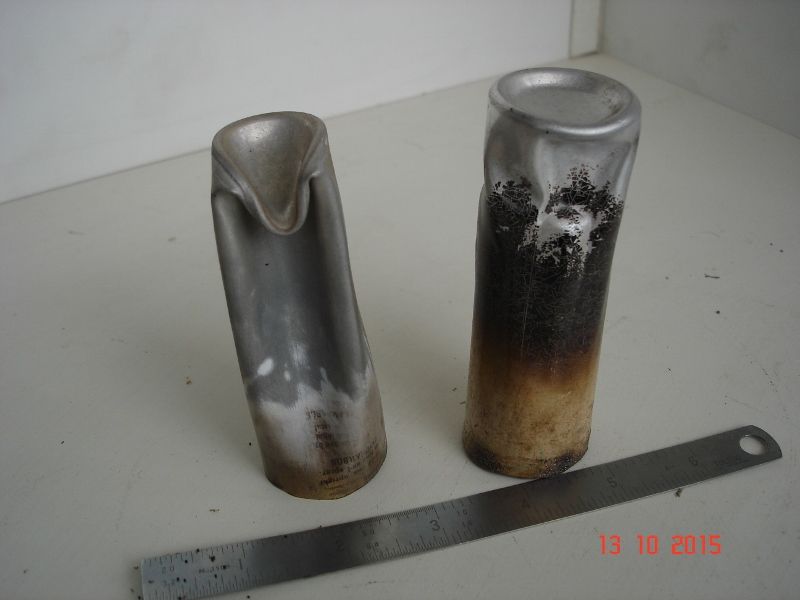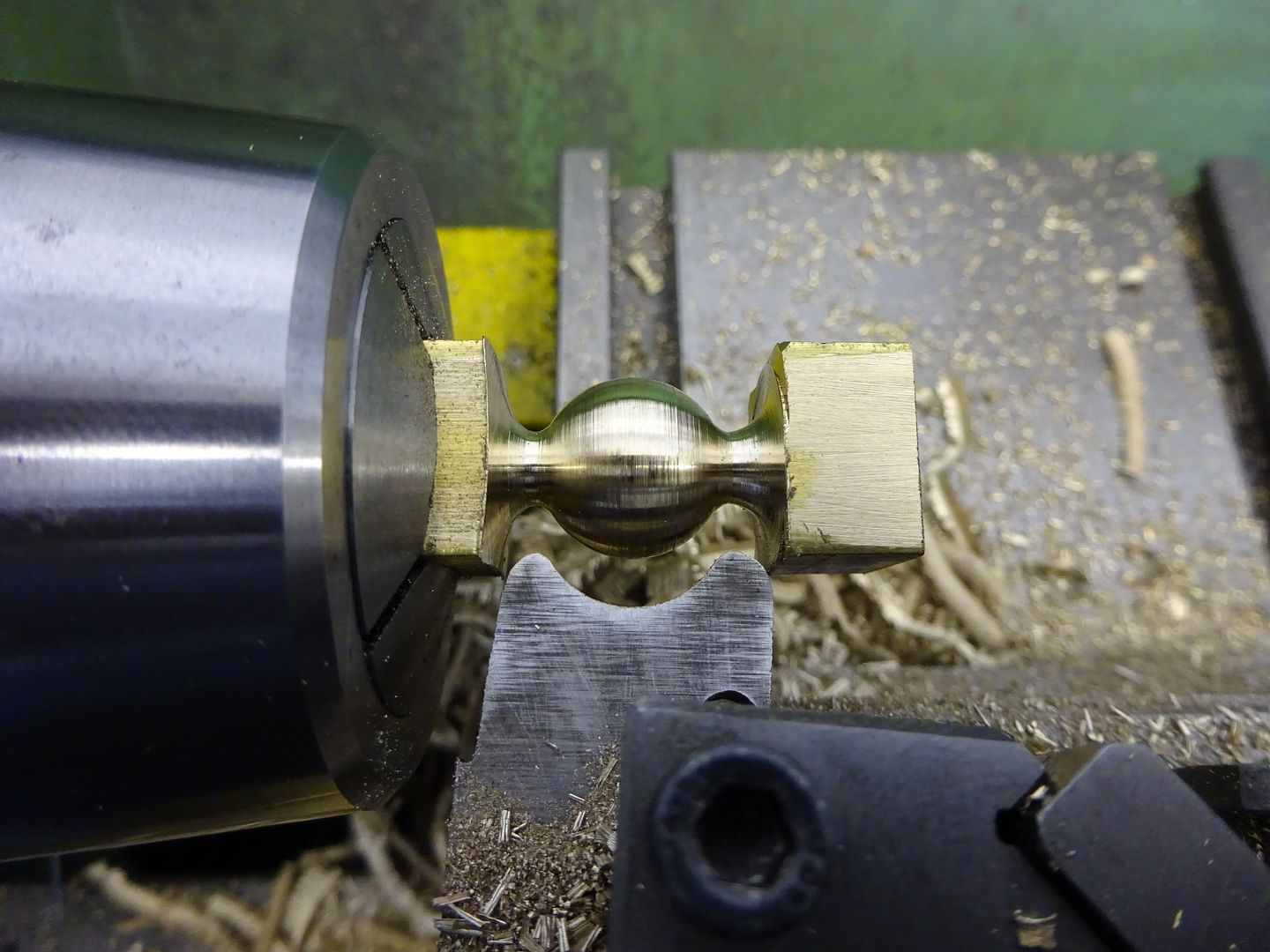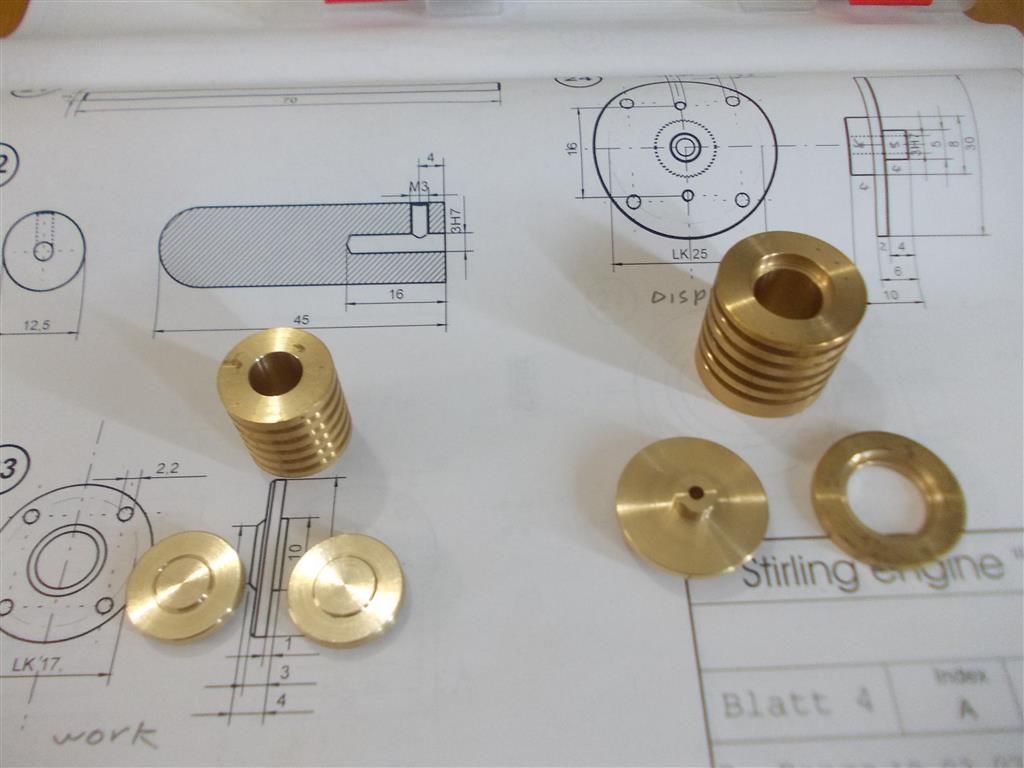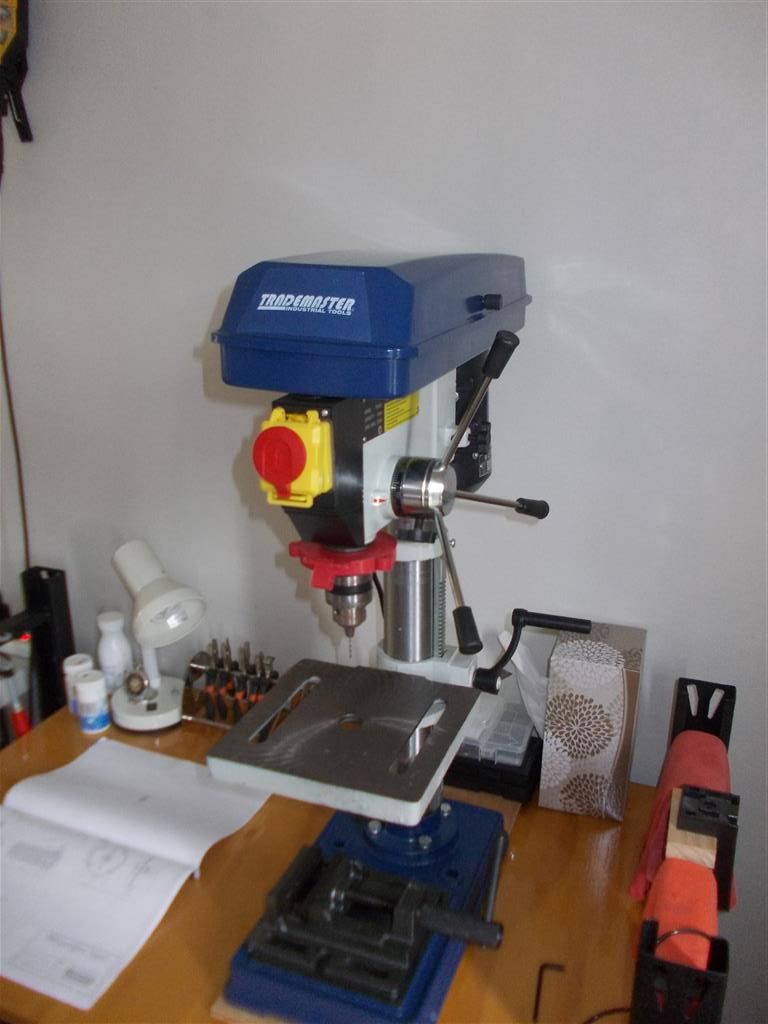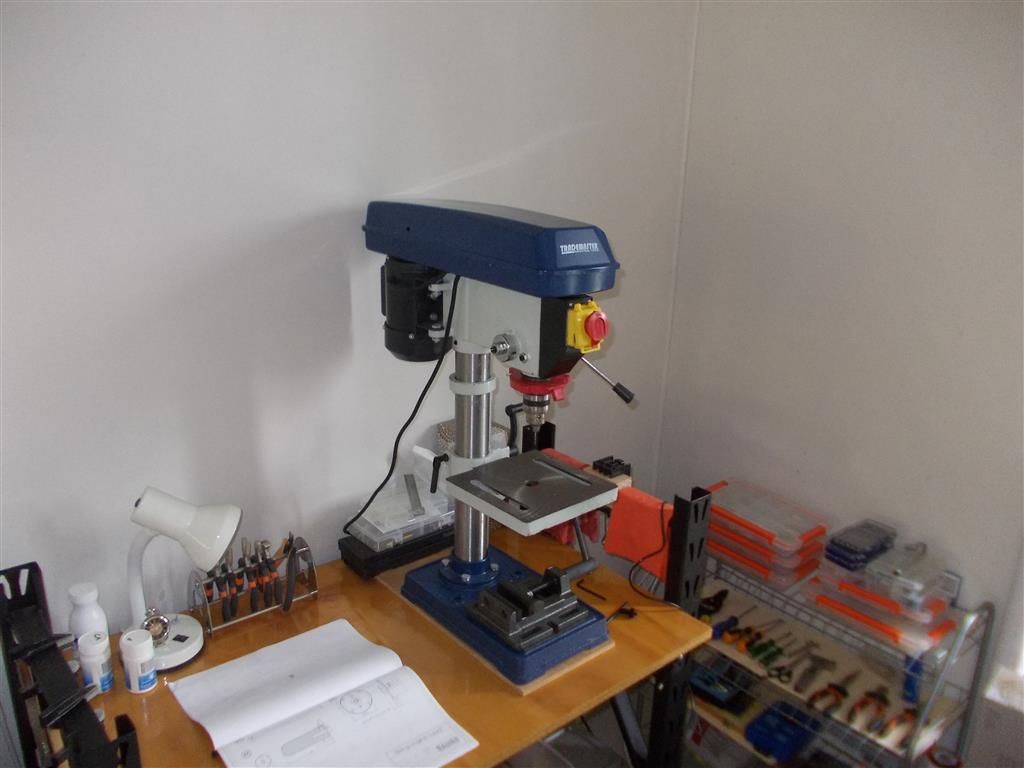Posted by Brian John on 21/12/2015 08:41:01:
I am also a bit puzzled about Stirling Engines in general : the displacement cylinder has a 14mm bore, the glass cylinder is 13mm ID and the piston is 12.5mm. It would seem that the bore of the displacement cylinder is not crucial as nothing is touching it. And I would have thought the piston would have to be a tighter fit inside the glass tube ?
Actually the parts list show the piston (part #22) as 13mm X 45mm but the drawing shows 12.5mm X 45mm. I do not think 12.5mm can be correct as this would surely be too loose in the 13mm ID glass tube ?
Edited By Brian John on 21/12/2015 08:41:28
Hi Brian,
I would go with the smaller diameter for the displacer piston (12.5mm) There has to be a clearance between the piston and the cylinder on the displacer cylinder. When the piston is at BDC, the air is all at the hot end of the glass tube. It heats up and exands, which is what pushes the power piston down the other cylinder.
Then as the crank rotates under power from the power cylinder, the displacer moves up the displacement cylinder. pushing the air out of the hot end of the glass tube and down to the cool end with the brass fins on it, where it cools and contracts and the cycle starts again.
So the gap around the displacer piston is to allow that air to flow back and forth from hot end to cool end of the displacer cylinder. The reason they use glass tube is because the glass is a poor conductor of heat so not too much heat can travel along the the displacer cylinder and make the cool end warm.
Gordon Tarling.





